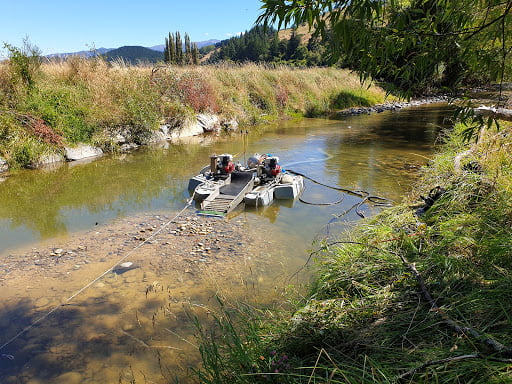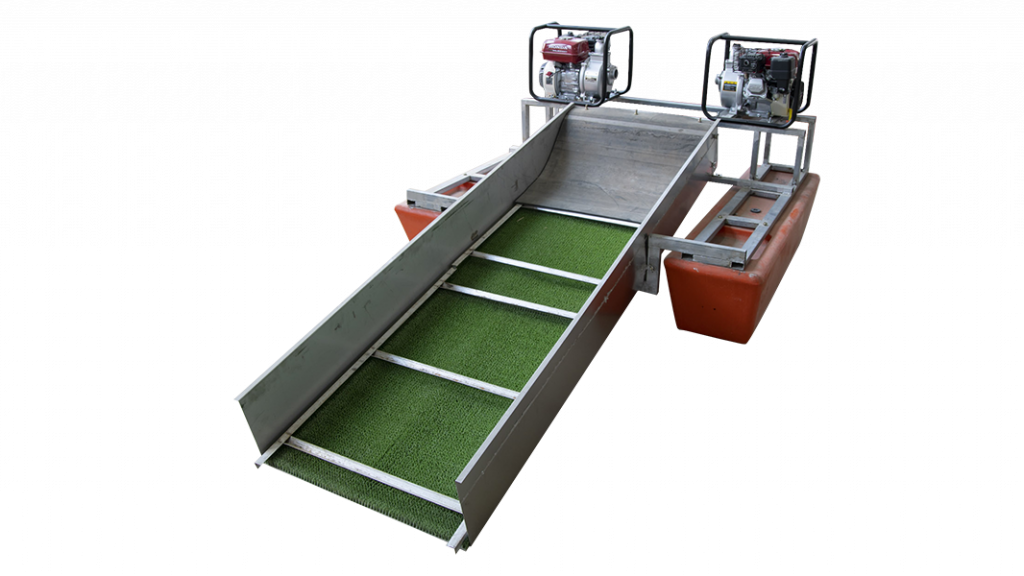What is gold dredge?
A gold dredge usually refers to a placer gold mining machine that extracts gold from sand, gravel, and dirt using water and mechanical methods. The original gold dredges were large, multi-story machines built in the first half of the 1900s. Small suction machines are currently marketed as “gold dredges” for individuals seeking gold, for example, many amateur in offshore from the beach of Nome, Alaska, are using small portable gold dredge sucking for placer gold in riverbed.

So why gold can be found in and alongside bodies of water
Usually, gold deposits can form in two broad ways: underground, associated with magmatic processes (the movement or emplacement of molten rock) or at the earth’s surface, associated with the movement of water.
The gold that ends up in riverbeds ultimately still comes from deposits that formed underground. The gold in such deposits can be released when, over time, the deposit comes to the surface and is eroded by wind and water. When this happens, the rock and the gold particles that together make up the deposits are washed away as sediment in the river.
The metal gold has a high density. Its density is considerably higher than that of the regular minerals, such as quartz, that form regular rocks. That means that grains of native gold are much harder to transport by water: you need really fast-flowing waters to get the gold grains moving.
Now imagine that a gold deposit is being eroded by a fast-flowing river. The gold is washed away along with everything else. Downstream, however, the river eventually slows down somewhat. At that point, the water doesn’t have the power to move the heavy gold particles, but it still washes away any regular sediment. Over time, a new gold deposit will form at that spot in the river. Such deposits are called placers.
The working principle of gold dredge
Many gold dredges are built as a mobile system that mechanically separates gold from gravel and sediment by sifting through gold suspected placer deposits along rivers and channels. Imagine panning for gold on an industrial scale.
Dredges today have been modernized and reduced in size for the convenience of independent prospectors. The more portable systems allows dredging systems to be set up in remote areas and coastal setting.
The key to all dredging systems is the sluice box which relies on riffles and a mesh sieve. The riffles create negative pressure along the top of the sluice to pull in fragments and small particles through a series of mesh screens. The heavier specific gravity of gold allows the placer gold to accumulate in the underlying riffle carpet.
The history and future of gold dredge
Dredging for gold still continues at several places around the world – although many of the best placer gold deposits have been worked out. The 2016 paper at (PDF) Bucket-line gold dredges – a review of world techniques details bucket line dredges at work in different countries. There are numerous photos. There are also many cutter suction dredges at work.
The picture below shows a cutter suction dredge and floating treatment plant in Sierra Leone owned by Sierra Rutile. Although rutile (titanium dioxide) is the main target, gold is a by-product and the principle is the same.
In the late 1960s and through today, dredging has returned as a popular form of gold mining. Advances in technology allow a small dredge to be carried by a single person to a remote location and profitably process gravel banks on streams that previously were inaccessible to the giant dredges of the 1930s.
Today dredges are versatile and popular consisting of both floating surface dredges that use a vacuum to suck gravel from the bottom and submersible dredges. Large dredges are still operating in several countries of South America (Peru,[12] Brasil, Guyana, Colombia), Asia (Russia, China, Mongolia Papua-New Guinea) and Africa (Sierra Leone). In 2015, gold miner Tony Beets reconstructed a 70-year-old dredge (as seen in the popular TV series, Gold Rush, on the Discovery channel.). As of 2016, this is the only operating large dredge in the Klondike. However, the gold dredge is currently working on fixing up a second dredge 33% larger than the first one. In Season 7 Episode 20, titled Dredge vs Washplant, it was shown that in a 2-day test the running costs of the dredge were approximately 25% of those of running a washplant and feeding it with heavy equipment.

The Small and portable gold dredge is very popular in nowadays gold dredging.
The environmental impact of gold dredge
Environmental impact studies show no clear positive benefits from suction dredging and potential negative impacts on stream systems.Small scale suction dredging in rivers and streams remains a controversial land management topic and the subject of much political turmoil.